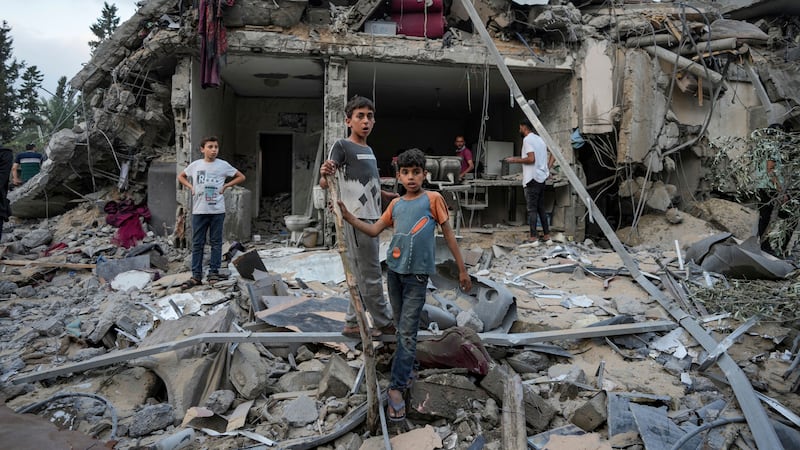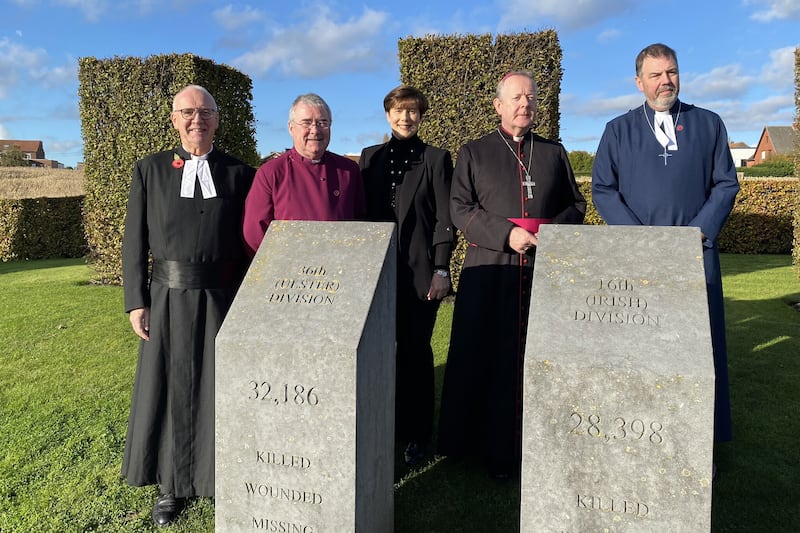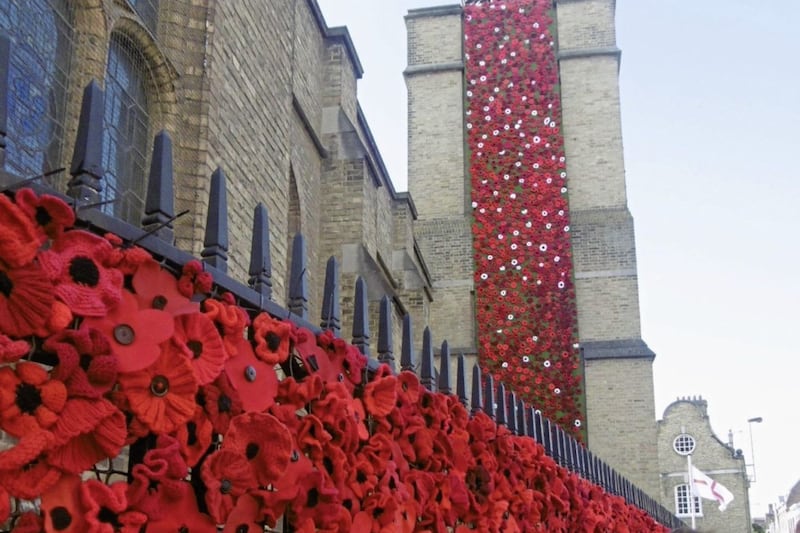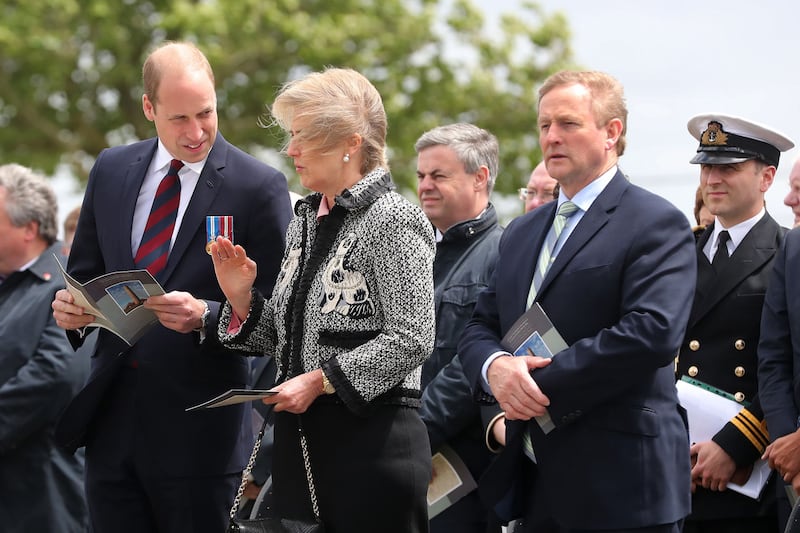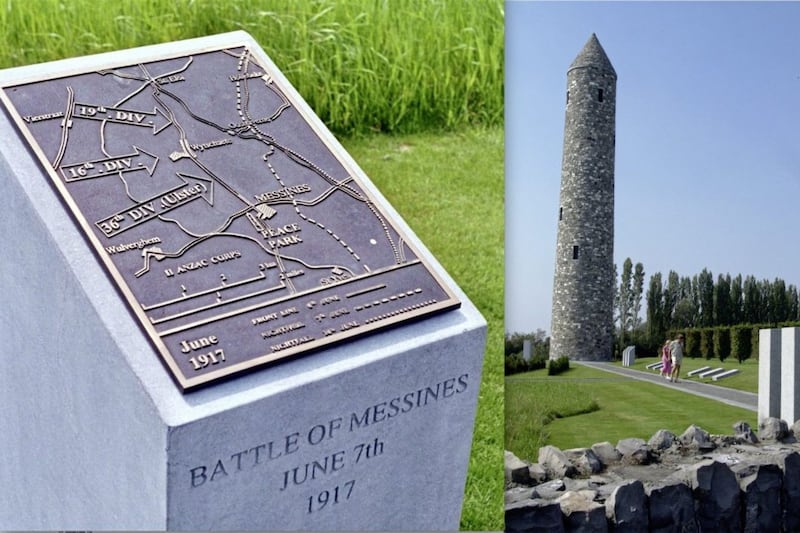New centenary memorials are being placed in Flanders to mark the triumph and disaster of the two occasions Ireland's unionist and nationalist army divisions fought side-by-side in the First World War.
The permanent tributes commemorate the 36th Ulster and 16th Irish divisions' role in the successful capture of Messines Ridge in June 1917 and their heavy defeat, just two months later, during an ill-fated offensive at nearby Langemark in the first weeks of the infamous Battle of Passchendaele.
The steel silhouette erected close to Messines last week depicts a scene that many believe encapsulates the legacy of those rare occasions Protestant and Catholic soldiers served together on the front line - the attempted battlefield rescue of fatally wounded 56-year-old Irish nationalist Home Rule MP Willie Redmond by a young unionist private, John Meeke.
It will be viewed by the Duke of Cambridge, Taoiseach Enda Kenny and Princess Astrid of Belgium at the entrance to Wytschaete Cemetery on Wednesday - the 100th anniversary of the Battle of Messines Ridge.
Two stone pillars - one marked 36th Ulster and one 16th Irish - already stand facing each other at the site.
Later this summer, a few short miles away, a bronze plaque commemorating the 1,200 soldiers from the 36th and 16th killed at Langemark near Frezenberg Ridge on August 16 will be fixed to a large granite memorial stone overlooking the Belgian fields where they fell.
One of the men behind the projects is retired Belgium army officer Erwin Ureel.
"The 36th and 16th only fought twice together and it's really a story of triumph and disaster," he said.
"Messines, since the late 1990s, is now an accepted story in Ireland but I think we should tell the whole story. The story of the disaster - the 16th of August - is completely forgotten in Ireland."
The 36th and 16th divisions predominantly comprised men who were on opposing sides of the great political upheaval back in Ireland around whether the country should be granted self-governance from Westminster.
Major Redmond's brother John was the leader of the constitutional nationalist Home Rule movement.
Unionist icon Edward Carson, also an MP, was a key figure in the establishment of the 36th Ulster.
Members of the Redmond family are due to attend Wednesday's commemorations in Belgium.
Mr Ureel first organised an event to mark the life and death of Willie Redmond in 1997.
"His dramatic evacuation by this loyalist I think is an example for reconciliation in Ireland," he said.
"That story should be used much more in Ireland, especially in Northern Ireland, to show what they can achieve.
"And that's what Willie Redmond wanted to do.
"He made a famous speech in Westminster about two months before he died here in which he really pointed to what the Irish were doing here together on the front and how that could set an example for Ireland at home."
The capture of Messines Ridge was a key objective of the Allied Forces ahead of their mid-summer 1917 offensive on German lines between the nearby town of Ypres and the small village of Passchendaele - a battle that has since become synonymous with the horrors of trench warfare.
Around 500,000 men were killed or injured on both sides as the attack became mired in the cloying mud of Flanders Fields.
A traditional Irish round tower was built in Messines in 1998 - the year of the historic Good Friday peace accord in Northern Ireland - to commemorate all those from the island who fell in the First World War.
The Duke, Mr Kenny and Princess Astrid will also visit that site - the Island of Ireland Peace Park - as part of Wednesday's programme.
Belgian historian Philippe Mingels, who specialises in the Irish contribution to the First World War, insists the co-operation between the 36th and 16th has not been overstated.
"Here they had a mutual enemy and it was all about surviving," he said.
"Of course they wanted to win but they wanted to survive - so if you want to survive you are better off with a good partner at your side knowing that he will fight as hard as you will and that is what happened here.
"No matter what tradition they were from, they believed the others would not do less than them."

